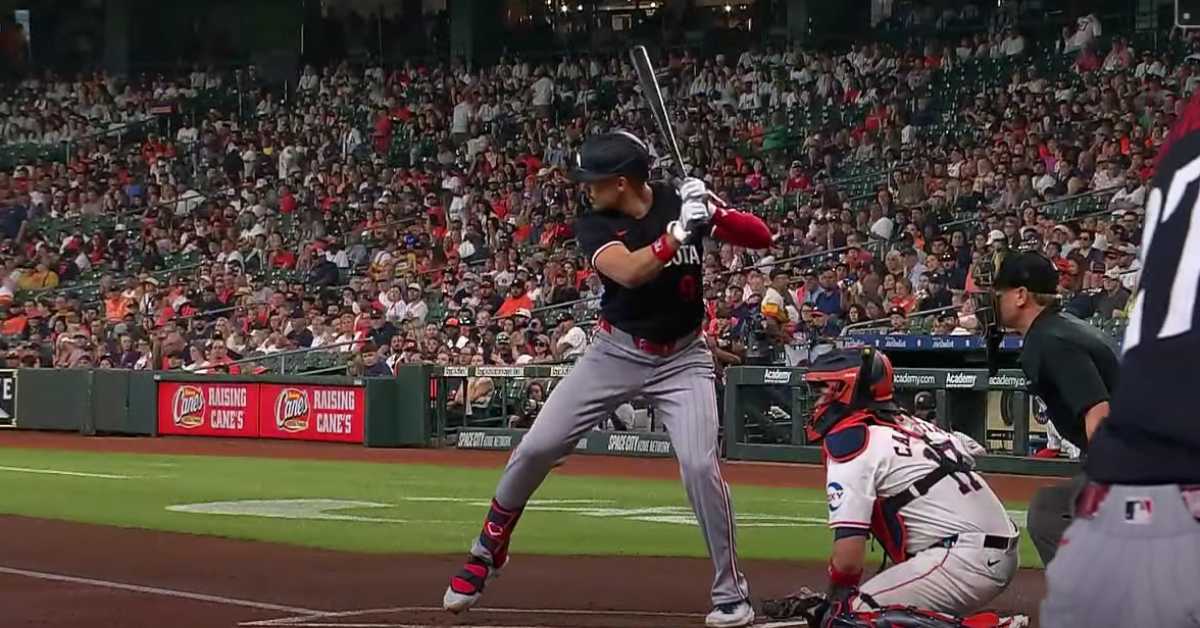Tag up in baseball means waiting on your base until a fly ball is caught before you advance. By doing this, the runner will not be doubled off and can advance safely.
Tag up is a fundamental baseball rule that involves strategic timing. If a batter hits a fly ball, baserunners must remain on their base until the ball is caught. If the ball is caught, they won’t be put out.
A runner can advance to the next base once the catch is made. Tag up requires quick reflexes and sharp decision-making, contributing to the game’s dynamic nature. The rule influences game outcomes and adds to the excitement of baseball both offensively and defensively.
What Months Are Baseball Season?
What Is Tagging Up?
In baseball, the term “tagging up” can seem confusing for new fans. Understanding this rule is crucial for appreciating the game’s strategy. So Let’s dive into the details.
Definition Of Tagging Up In Baseball
Tagging up refers to a rule that applies when a fly ball is caught by a fielder. The base runner must touch the base they occupied at the time of the pitch before advancing to the next base. This rule ensures fair play and adds a strategic layer to the game.
Here are some key points to remember:
- The runner must wait until the ball is caught.
- The runner must touch the original base before moving.
- If the runner leaves too early, they can be called out.
Let’s look at an example to clarify:
| Scenario | Action |
| Fly ball is hit to the outfield | Runner waits on the base |
| Fielder catches the ball | Runner tags up by touching the base |
| Runner advances to the next base | Runner is safe if they tagged up correctly |
Explanation Of When Tagging Up Is Required
Tagging up is required in specific situations. These include:
- Fly Balls: When a fly ball is caught, runners must tag up.
- Line Drives: If a line drive is caught, runners must return and tag up.
- Pop-Ups: For infield pop-ups, runners must tag up if the ball is caught.
Consider these scenarios:
- The runner on third base waits for a fly ball to be caught in the outfield. Once the catch is made, the runner tags up and races home.
- A runner on first base sees a line drive caught by the shortstop. They quickly tag up and return to first base.
Tagging up ensures that base runners advance fairly and adds an element of suspense. Fans watch closely to see if the runner can make it to the next base safely.
How Tagging Up Works

Whenever a fly ball is caught by a fielder, a baserunner advances to the next base by tagging up. A keen awareness of the game situation is required for this play. By understanding tagging up, a player can improve his overall game strategy and baserunning skills.
Step-by-step Guide On How Tagging Up Works
Tagging up involves several key steps that a baserunner must follow to execute the play successfully:
- Watch the Fly Ball: The baserunner must keep a close eye on the fly ball’s trajectory to judge if it will be caught.
- Return to the Base: The runner must return to their current base and touch it before advancing.
- Wait for the Catch: The runner waits until the fielder catches the ball.
- Advance Quickly: Once the ball is caught, the runner sprints to the next base.
- Slide if Necessary: A slide into the base can help avoid a tag from the fielder.
These steps ensure the runner adheres to the rules and maximizes their chances of advancing safely. Let’s break this down further with an example:
| Step | Description |
| 1 | Watch the fly ball’s trajectory |
| 2 | Return to your current base and touch it |
| 3 | Wait for the fielder to catch the ball |
| 4 | Sprint to the next base after the catch |
| 5 | Slide into the base if necessary |
Examples Of Tagging Up In A Game
Tagging up can turn the tide of a game. Here are some common scenarios:
- Runner on Third Base: A player on third base waits for a fly ball to be caught. Once caught, they sprint home to score a run. This is often seen in sacrifice fly situations.
- Runner on Second Base: The runner on second tags up after a deep fly ball to the outfield. They advance to third base, putting themselves in scoring position.
- Runner on First Base: Tagging up from first to second is less common but can occur if the ball is hit deep enough, allowing the runner to advance safely.
Consider this example: During a close game, a player on third base tags up and scores on a caught fly ball. This strategic move can be the difference between winning and losing.
Consider this example: A third baseman tags up and scores on a caught fly ball during a close game. Wins and losses can be decided by this strategic move.
Consequences Of Failing To Tag Up
Tagging up in baseball is a crucial rule for base runners. It ensures that a runner does not leave the base too early when a fly ball is caught. Failing to tag up can have serious consequences. It can affect both the runner and the team in various ways.
Explanation Of The Consequences For The Runner And The Team
Failing to tag up can lead to significant problems for both the runner and the team. Here are some of the main consequences:
- Runner gets out: If a runner leaves the base before the ball is caught, the defense can throw the ball to the base the runner left. This results in an out.
- Loss of scoring opportunity: A runner who fails to tag up and gets out can cost the team a potential run. This can be crucial in a close game.
- Team morale: Such mistakes can lower the morale of the team. Other players may feel frustrated or disappointed.
Occasionally, failure to tag up can lead to double plays. It could also happen that another runner gets out, instead of just the runner who failed to tag up.
| Consequence | Description |
| Out for the runner | The runner is declared out if the ball reaches the base before they return. |
| Loss of scoring chance | A potential run is lost, which can affect the final score. |
| Double plays | Two outs can occur from a single mistake. |
Examples Of How Failing To Tag Up Affects The Game
Real game scenarios highlight the importance of tagging up. Here are some examples:
Example 1: In a close game, a runner on third base fails to tag up on a fly ball. The outfielder catches the ball and quickly throws it to third base. The runner is out, and the team misses a chance to score a run. It can affect the game’s outcome.
Example 2: With bases loaded, a fly ball is hit to the outfield. The runner on second base leaves too early and does not tag up. The outfielder catches the ball and throws it to second base for a double play. With two outs, the inning ends without a run being scored.
Example 3: During a playoff game, a player on first base forgets to tag up on a deep fly ball. Then the outfielder catches the ball and throws to first base. The runner is out, and the team loses a critical base runner in a high-stakes game.
In these examples, failing to tag up drastically impacts the game. It can change the momentum and affect the final score. To avoid these costly mistakes, players must always tag up.
Tips For Successful Tagging Up
Tagging up in baseball is a strategic move. The baserunner has to wait until a fly ball is caught before advancing. This tactic requires precise timing and awareness. This section offers tips for runners and coaches on how to tag up successfully.
Advice For Runners On How To Successfully Tag Up
For a runner, tagging up can be the key to scoring a crucial run. Here are some tips to ensure success:
- Watch the ball: Always keep your eyes on the ball. Know when it is caught to make a quick decision.
- Listen to your coach: Coaches provide essential signals. Trust their judgment and follow their cues.
- Position yourself correctly: Stand on the base with one foot, ready to push off as soon as the ball is caught.
- Practice your timing: Timing is crucial. Practice leaving the base at the exact moment the ball is caught.
Here’s a quick table to summarize these tips:
| Tip | Description |
| Watch the ball | Keep your eyes on the ball at all times. |
| Listen to your coach | Follow the signals from your coach. |
| Position yourself correctly | Stand on the base with one foot ready to push off. |
| Practice your timing | Leave the base exactly when the ball is caught. |
Tips For Coaches On How To Train Their Players On Tagging Up
Coaches play a crucial role in training players to tag up effectively. Here are some strategies:
- Drills and practice: Incorporate tagging up drills in regular practice sessions. Simulate game situations to help players get comfortable.
- Clear communication: Teach players the importance of listening to signals. Use consistent and clear communication methods.
- Emphasize timing: Focus on the timing of the move. Practice drills where players leave the base at the perfect moment.
- Review game footage: Analyze past games to show players examples of successful and unsuccessful tag-ups.
Consider this table for a quick overview:
| Strategy | Description |
| Drills and practice | Use regular drills to simulate game situations. |
| Clear communication | Use consistent signals and communication methods. |
| Emphasize timing | Practice the exact timing for leaving the base. |
| Review game footage | Show examples from past games. |
Runners and coaches can improve their tagging up strategies by following these tips.
Conclusion
Baseball tagging up is a crucial skill that can impact a game. It helps players make smart decisions by understanding its rules. You can give your team an edge by mastering this. Tag up will become second nature if you keep practicing.
Read More
What Does Defect Mean In Baseball?
Why Are Baseball Contracts So Long?



